 Libri di Steven Parissien su Unilibro.it
)
Libri di Steven Parissien su Unilibro.it
)
|
|
1918 |
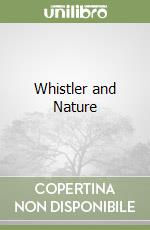 Title :
Whistler and Nature
Title :
Whistler and NatureAuthor: de Montfort Patricia, Willsdon Clare, Parissien Steven (EDT) Publisher: Paul Holberton Pub € 26,80
|
|
|
1915 |
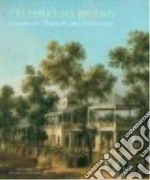 Title :
Celebrating Britain
Title :
Celebrating BritainAuthor: Parissien Steven (EDT) Publisher: Paul Holberton Pub By 1750 Britain was - as Jacqueline Riding shows - at peace with her traditional enemy, France, and had finally extinguished the threat from the Catholic Jacobites. The art of William Hogarth – particularly his great canvas O The Roast Beef of Old England of 1749 – duly reflected this new sense of security and pride in being British. The economy was booming. Trade was expanding. And newly-confident Britons were no longer looking to Italy or France for their cultural exemplars, particularly in the field of architectural design. It was the ferment of activity, the eclectic building boom which underlines Britain’s wealth and optimism, and which marks the nation out as the new Venice, which is the real subject of Canaletto’s great canvases. Almost all of Canaletto’s views focused on a new architectural commission or a recent urban development, and were specifically designed to celebrate the latest achievements of British architecture and engineering. The Italian master was not alone. The vigorous and infectious patriotism of his works mirrored emerging nationalistic trends in popular culture during the 1740s, a decade which witnessed the canonization of William Shakespeare as a British hero, the creation of Handel’s Messiah and Arne’s immortal ‘Rule Britannia’, and, as Oliver Cox shows, the propagation of the nationalistic cult of King Alfred - and, more bizarrely, of the ‘flying king’ Bladud in Bath. As Pat Hardy explains, the presence of a significant group of artists working in London prior to Canaletto’s arrival, led by Samuel Scott, along with the strength of existing artistic practices and traditions and the vibrant print market for maps and surveys of London, suggests that the impact of the arrival of Canaletto was more complicated than may have previously been perceived. At the same time, Canaletto’s legacy survived throughout the eighteenth century, in the hands of native artists such as William Marlow. € 26,80
|
|
|
1914 |
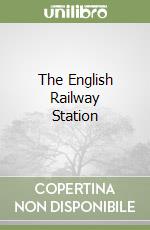 Title :
The English Railway Station
Title :
The English Railway StationAuthor: Parissien Steven Publisher: English Heritage The railway station is one of England's most distinctive, characterful and best-loved building-types. Yet over the past century the nation's stations have often been overlooked or dismissed, and have suffered accordingly. Hearteningly, today a new interest in railways - fuelled by the need for sustainability, by a growing awareness of the realities of transport economics and by the dedication of enthusiastic volunteers at heritage railways across the country - has sparked a renaissance for the historic railway station and a new appreciation of the aesthetic virtues and regeneration potential of imaginative station architecture.The English Railway Station is an accessible, engaging and comprehensively-illustrated general history of the architectural development and social history of the British railway station, from the dawn of the Railway Age to the ravages of the 1960s and the station's rebirth at the end of the 20th century. It traces how the station evolved into a recognisable building type, examines the great cathedrals and the evocative country stations of the Victorian era, and looks at how the railway station has, over the last fifty years, regained its place at the heart of our communities. € 53,10
|
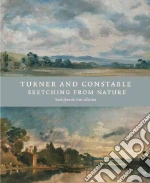 Title :
Turner and Constable
Title :
Turner and ConstableAuthor: Rosenthal Michael, Lyles Anne (CON), Parissien Steven (EDT) Publisher: Harry N Abrams Inc Focusing on the works of J. M. W. Turner, John Constable, and their contemporaries, this richly illustrated book explores the development, variety, and innovation of the landscape oil sketch in British art, beginning with its appearance in the 1770s. With insight into the different modes used for oil sketching in this period?a time when working en plein air was still comparatively unusual?the authors show how each practitioner approached similar subjects. The result is an accessible introduction to the techniques of sketching and the often surprising connections that can be drawn among the artists involved. The book features some 60 works from the Tate collection by Turner, Constable, George Stubbs, William Henry Hunt, and many others. € 23,90
|
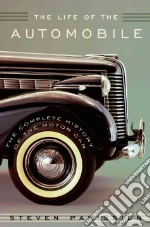 Title :
The Life of the Automobile
Title :
The Life of the AutomobileAuthor: Parissien Steven Publisher: Thomas Dunne Books The first all-encompassing narrative history of how the car shaped the world € 35,70
|
|
1911 |
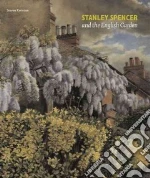 Title :
Stanley Spencer and the English Garden
Title :
Stanley Spencer and the English GardenAuthor: Parissien Steven (EDT), Bell Keith (CON), Gould Jeremy (CON), Postle Martin Dr. (CON), Robinson Duncan (CON) Publisher: Paul Holberton Pub Stanley Spencer (1891-1959) is perhaps best known for his mystical biblical scenes and candid self portraits, but it was his magnificent paintings of gardens, houses and landscapes, set in the small alleys and overgrown backyards of his home village of Cookham, which proved more popular during his lifetime. Published to accompany the exhibition Stanley Spencer and the English Carden at Compton Verney. Warwickshire, this book is the first to focus specifically on Spencer's landscape paintings, and to consider them as a group, rather than as punctuation marks between the figure paintings. € 26,80
|
|
|
2002 |
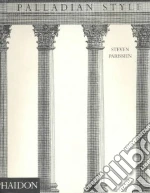 Title :
Palladian style. Ediz. illustrata
Title :
Palladian style. Ediz. illustrataAuthor: Parissien Steven Publisher: Phaidon € 39,95
|
 Title :
Adam style. Ediz. illustrata
Title :
Adam style. Ediz. illustrataAuthor: Parissien Steven Publisher: Phaidon € 39,95
|
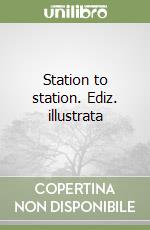 Title :
Station to station. Ediz. illustrata
Title :
Station to station. Ediz. illustrataAuthor: Parissien Steven Publisher: Phaidon € 35,00
|
|
1994 |
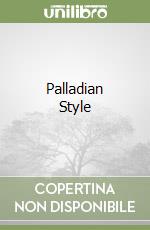 Title :
Palladian Style
Title :
Palladian StyleAuthor: Steven Parissien Publisher: PHAIDON PRESS € 50,51
|
|
|
1992 |
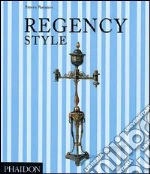 Title :
Regency style. Ediz. illustrata
Title :
Regency style. Ediz. illustrataAuthor: Parissien Steven Publisher: Phaidon € 39,95
|